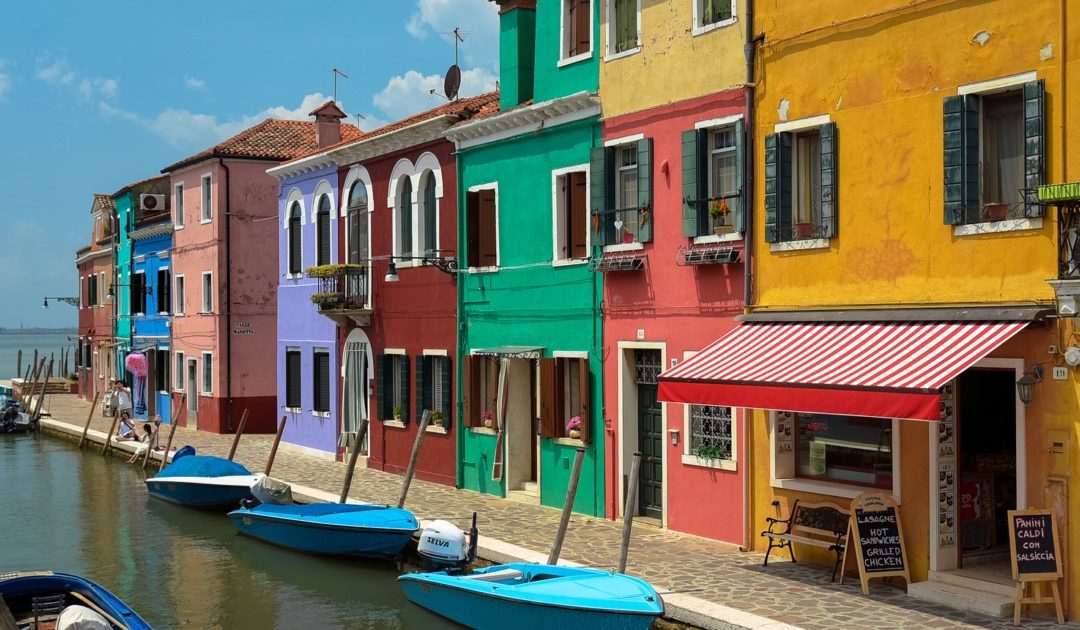Not everyone knows this, but Venice is an integral part of an archipelago of over 100 islands, where history and culture come together, creating a space full of curiosities and legends. Some of these islands have disappeared, swallowed by the sea, while others continue to survive, offering unique scenarios and a literature of great interest.
If you plan to leave for a short stay in Venice, our advice is to participate in one of the many tours that allow you to discover the islands of the Venetian lagoon archipelago: http://bit.ly/buranoMurano
Torcello
The island of Torcello is inhabited by just 20 inhabitants. Legend has it that it was one of the places crossed by the Huns, led by the legendary Attila. And it is precisely Attila who, according to legend, would be the owner of the stone seat at the center of the main square of the small island. But another theory would attribute the seat to the activity of a judge.
Burano
Burano is famous for its lacemakers, ladies who with their art have made the island one of the most visited places in the Venetian lagoon along with Murano. Even today, if you visit these areas, you can find the few lacemakers left who create lace on the pillow. Yet Burano is remembered above all for its colors that embellish the walls of all its houses, forming a rainbow of a thousand shades.
Murano
Universally recognized as the island of glass, Murano is after Venice the main tourist attraction for those who choose to discover the wonders of the Lagoon. The beginning of the production of glass on the island dates back to 1200. Originally there was a very precise need, far from any artistic ambition. In fact, the construction of the furnaces for the transformation of silicon sand into glass was necessary to minimize the high risk of fires in Venice and its surroundings in those times.
St. Erasmo
If Murano is the island of glass, Sant’Erasmo is considered the vegetable garden of Venice. The main curiosity linked to the island lies in the fact that each year it supplies the Veneto capital with innumerable first fruits. Hence the nickname assigned to it in recent times. The most famous plant of Sant’Erasmo is the artichoke. During a short stay on the island you can taste the characteristic beer flavored with artichoke, an authentic delicacy!
Poveglia
No inhabitants, no piers on which you can dock. Among the reasons why Poveglia is known as a ghost island, one can certainly note these two gloomy details. Poveglia has been uninhabited for over half a century and owes its fame to the old psychiatric hospital that once stood on the island. Moreover, in the past Poveglia was used as a hospital for the persons affected by the plague. To reach it it’s essential to know somebody who has a boat, as it is cut off from the routes of public transport in the lagoon.
San Lazzaro degli Armeni
From the name you can guess the close link between the island of San Lazzaro and the Armenian people. On this island of the Venetian Lagoon stands an ancient monastery founded by some Armenian monks in the early eighteenth century, after having fled from Greece. In the Hellenic country, in those years, the Armenian population was subject to violent persecution. The famous English poet Lord Byron visited San Lazzaro to deepen his knowledge of the Armenian people.
Giudecca
La Giudecca, also called Spina Longa (due to its particular geographic conformation), is after Venice the most extensive island of the entire archipelago of the Lagoon. Overall it consists of 8 other smaller islands. The name Giudecca probably dates back to the time when the island was the residence for the Jewish population. Among its main monuments are the Church of the Redeemer and the Church and Convent of the Zitelle, the latter designed by Andrea Palladio.
Are you ready to go on a tour of the islands of the lagoon? Sail off now and then tell us how it went!




